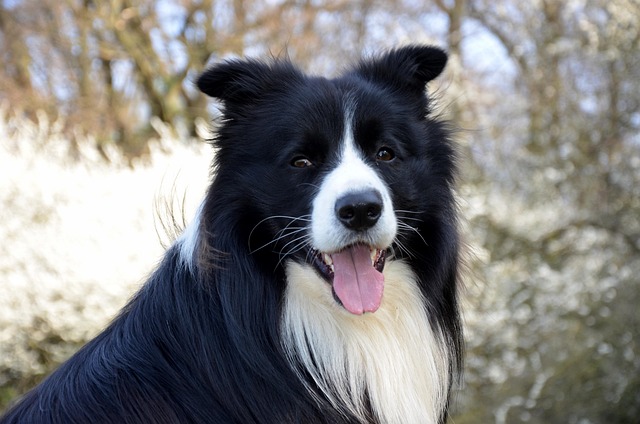
How can I tell if my dog's heatstroke is serious
Let’s be real: It’s a sticky August morning in Los Angeles, and you took your 2-year-old Golden Retriever, Max, for a walk a little later than usual
Border Collies are bundles of energy with a coat built for the Scottish highlands, but that doesn't mean they don't need regular grooming. The question of how often to bathe these intelligent herders depends on their lifestyle, coat condition, and local environmental factors.
Think of your dog's coat as a natural shield. Border Collies have a double coat—a soft undercoat for warmth and a coarser outer layer that repels dirt and moisture. Overwashing strips away essential oils, leaving their skin dry and prone to irritation. For an average family pet that spends most days indoors and enjoys occasional park runs, bathing every 4-6 weeks strikes the right balance.
Active working dogs tell a different story. If your Border Collie herds livestock, competes in agility, or spends hours exploring muddy trails, you might need to reach for the shampoo more frequently. But aim for a maximum of once every two weeks to avoid stripping the coat's protective barrier. Remember to rinse thoroughly—any product residue can cause itching down the line.
When choosing a shampoo, look for pH-balanced formulas designed for dogs. Avoid human products, as our skin and theirs have different acidity levels. In regions with hard water, consider using a conditioner to prevent mineral buildup that dulls the coat. And always finish with a warm water rinse—no one likes the feeling of crunchy hair!
 Now, let's talk about legal and ethical considerations. Many local ordinances govern pet care, including proper waste disposal and grooming practices. Ensuring your bathing routine doesn't contribute to runoff pollution is not just good citizenship—it's often required by law. Using biodegradable products and avoiding excessive water usage helps keep both your dog and the environment happy.
Now, let's talk about legal and ethical considerations. Many local ordinances govern pet care, including proper waste disposal and grooming practices. Ensuring your bathing routine doesn't contribute to runoff pollution is not just good citizenship—it's often required by law. Using biodegradable products and avoiding excessive water usage helps keep both your dog and the environment happy.
If your Border Collie develops a skin condition or odor between baths, spot cleaning can be a lifesaver. Dampen a cloth with warm water and mild dog shampoo to target dirty areas like paws, bellies, and faces. This gentle approach minimizes stress on their skin while keeping them presentable for impromptu playdates at the dog park.
Finally, pay attention to your dog's body language. If they start scratching excessively, develop hot spots, or their coat loses its luster, it might be time to consult a vet. Sometimes, a change in bathing frequency isn't the solution—diet, allergies, or parasites could be the real culprits.
Grooming time is more than just hygiene; it's an opportunity to bond with your furry friend. Use the bath as a chance to check for ticks, lumps, or signs of injury. A calm, positive experience will make future baths easier and strengthen the trust between you and your high-energy companion.

Let’s be real: It’s a sticky August morning in Los Angeles, and you took your 2-year-old Golden Retriever, Max, for a walk a little later than usual

You're enjoying a summer afternoon at the park when you notice your dog has stopped panting and appears disoriented - their gums are bright red

Let’s paint the picture: You’re in your Denver apartment, watching your 4-year-old Boston Terrier, Ruby, plop down mid-play session with her favorite toy

Many dog owners notice their pets nails seem shorter after regular walks,but how much does this daily activity actually help?The answer depends on where you walk—concrete sidewalks or asphalt streets gently file nails as a dog's paws hit the ground

Most dog owners notice their pup scooting across the carpet at some point, but few connect it to impacted anal glands. These small sacs near a dog’s rectum secrete a scent for marking territory

Most vets agree that regular dog teeth cleaning is key to avoiding painful dental issues later. For healthy adult dogs, a professional cleaning at the vet’s office every 12 to 18 months usually works well.